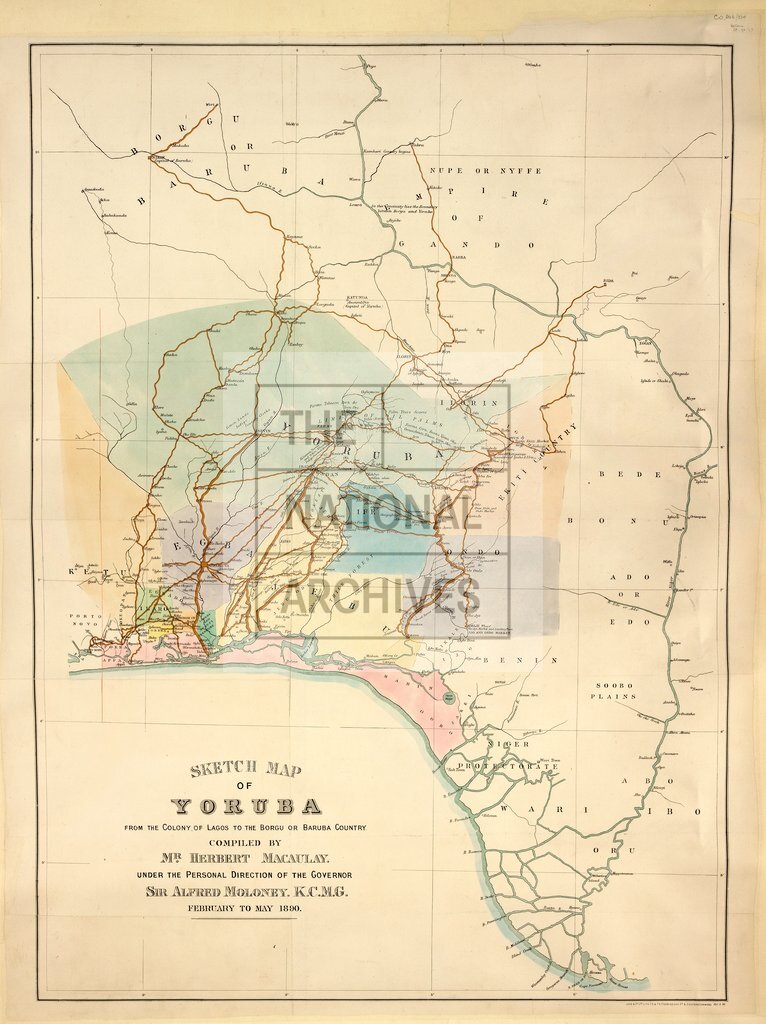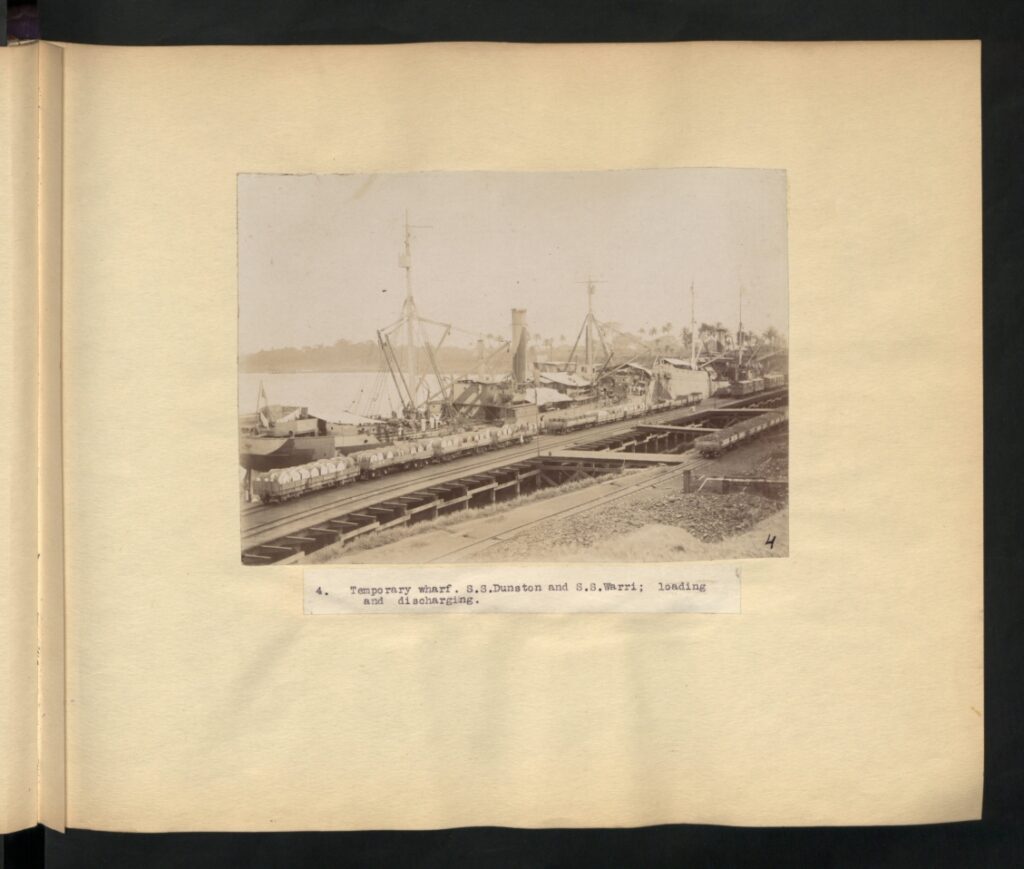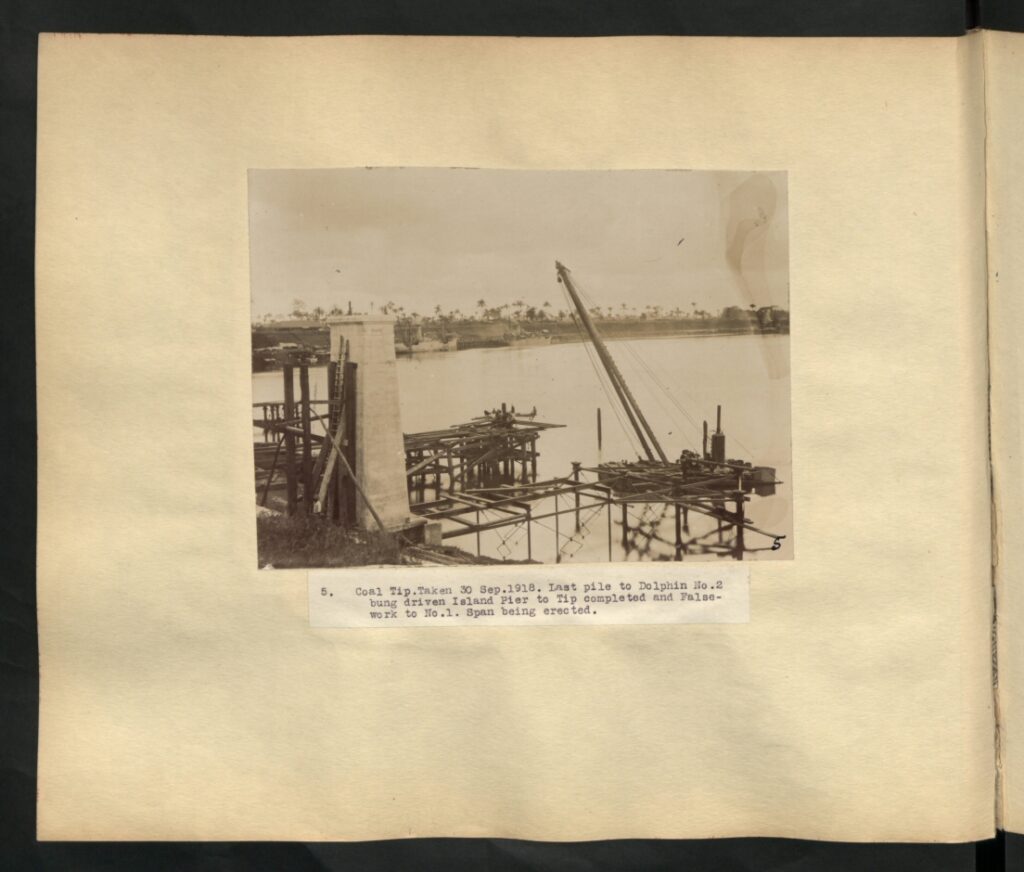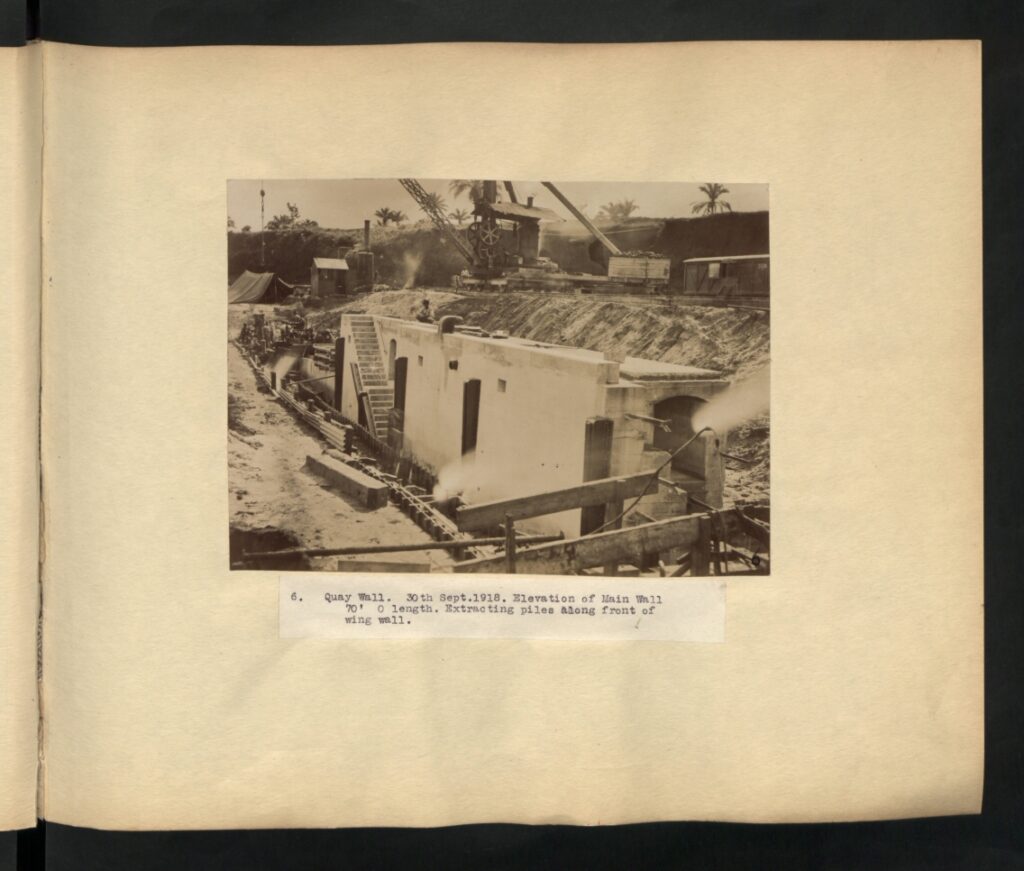Lagos, Nigeria was full of life in the 1890s. The streets were busy with traders calling out their prices, sailors unloading ships at the docks, and children running through narrow paths between wooden houses. The city was growing fast, and something new had arrived that would change how people remembered their world. It was the art of photography.
Photography had spread across West Africa. In Lagos, talented photographers from Sierra Leone, Liberia, and the Afro-Brazilian community opened studios in different parts of the city. People dressed in their best clothes and came to take portraits. Families wanted pictures to keep as memories, while others asked for photos of their homes, churches, and the beautiful streets of Lagos. Each photograph became a small piece of history.
Between 1890 and 1910 the most prominent Lagos photographer was Neils Walwin Holm, who dominated the city’s studios. In this period, when many African photographers had learned how to use the new technology, Macaulay, who was trained as an engineer and surveyor, also had many chances to work with cameras and mapping tools.
Herbert Samuel Heelas Macaulay was born on November 14, 1864, in Lagos, Nigeria, into a family deeply rooted in the early missionary and educational history of West Africa. His father, Reverend Thomas Babington Macaulay, founded the first secondary school in Nigeria, the CMS Grammar School, while his mother, Abigail Crowther, was the daughter of Bishop Samuel Ajayi Crowther, the first African Anglican bishop. Growing up in this environment exposed Herbert to education, Christianity, and the administrative systems that came with British colonial rule.
Macaulay began his education at St. Paul’s Breadfruit School and later attended CMS Grammar School in Lagos. In 1881, he joined the colonial civil service as a clerical assistant in the Public Works Department. His brilliance and diligence earned him a government scholarship in 1890 to study in England. Between 1891 and 1894, he studied civil engineering, surveying, and architecture at the Public Works Department in Plymouth, making him one of the first Nigerians to be formally trained in those disciplines.
Herbert Macaulay is known in Nigeria as one of the first nationalists, an engineer, a surveyor, and a journalist. Many people call him the “father of Nigerian nationalism.” As Fafowora observes, “Macaulay was a man of many parts. An engineer, architect, surveyor, journalist, musician, politician, and nationalist, and Lagos was about Macaulay and Macaulay was about Lagos”. During the colonial period, he used new tools like photography and mapping to record life in Lagos, which was then a British colony, and its surrounding Yoruba areas. He created detailed maps and kept scrapbooks, diaries, and newspaper cuttings from his years of activism.
This report tells the story of Herbert Macaulay, a man who captured Lagos through his camera in the late 1800s and early 1900s. His photographs showed the busy streets, the people, and the growing city during a time of great change. But after Macaulay died, most of his photo negatives went missing. No one knows for sure what happened to them, and their disappearance has remained a mystery.
It also looks at the few pictures that are still left today, found in both Nigeria and the United Kingdom. The report explains how photography was becoming popular in Lagos back then and compares Macaulay’s lost work with other old photo collections that also disappeared over time.
Strangely, even though Macaulay’s written works are well preserved, most of his photographic negatives are missing. Only a few pictures are credited to him today, and the original photos he took appear to be lost.
Macaulay was a trained civil engineer and surveyor. He studied in England from 1891 to 1894, where he worked as a pupil under a borough surveyor in Plymouth. When he returned to Nigeria in 1893, he became the Surveyor of Crown Lands in the Lagos Colony. In this position, he collected information about Lagos and the Yoruba territories and created maps for the Colonial Office. One of his most famous works is a “Sketch Map of Yoruba, from the Colony of Lagos to the Borgu or Baruba Country,” which he completed under the Governor’s direction in 1890.

However, Macaulay became increasingly disillusioned by the racial discrimination and corruption within the colonial system. European officials earned far higher salaries than their African counterparts, and land policies were often manipulated to dispossess indigenous Lagosians. In protest, he resigned from government service in 1898 and established his private practice as a civil engineer and surveyor. From his office at Kirsten Hall in Yaba, he offered private land surveys and architectural consultations while continuing to collect and archive official documents, correspondence, and maps.
In 1923, Macaulay founded the Nigerian National Democratic Party (NNDP), the first organized political party in Nigeria, which contested and won seats in the Lagos Legislative Council. Two decades later, he co-founded the National Council of Nigeria and the Cameroons (NCNC) with Dr. Nnamdi Azikiwe, a movement that became central to Nigeria’s struggle for independence.
In 1927, Macaulay and his friend Dr. John Cauldick Akinlade bought the Lagos Daily News. It was the first daily newspaper in British West Africa and was founded in 1925. He also kept voluminous scrapbooks of colonial government orders, political pamphlets and correspondences. But the real mystery is that no archive lists a comprehensive set of Macaulay’s photographic negatives. Nothing in the University of Ibadan’s catalogue, the British Library’s Africa holdings, or the Royal Geographical Society’s map collections names such images.
His archival instinct was legendary. He was said to keep meticulous records of colonial decrees and events. His scrapbooks eventually filled volumes of pamphlets, memos, newspapers and letters. Among these was an eclectic collection of material: for instance, a biography of the Haitian revolutionary Toussaint L’Ouverture was discovered in his archives. The preservation of such unusual documents shows how thorough he was.
As a surveyor, he might have taken photos to aid mapping or building designs, a common practice by the 1890s when portable field cameras were available. In fact, colonial officers like Sir C. W. Nevill used cameras to record infrastructure projects in Nigeria at that time. The only visual relics explicitly tied to Macaulay are a handful of portrait photographs and political cartoons, none of which are negatives from his own camera.
The British colonial photo archives contain thousands of images of Nigeria from 1860–1960 (digitized in their Flickr), but none appear to credit Macaulay or originate from him. In contrast, the map he drew in 1890 stands as a testament to his role as Lagos surveyor, yet the negatives corresponding to any of his photographs remain untraceable.




The images above are part of the Colonial Office photographic collection held at The National Archives, uploaded as part of the Africa Through a Lens project. Credit: The National Archives UK
The Smithsonian’s National Anthropological Archives has prints by Boydell or Oguntokun of Lagos markets (post-1950). But no known institution lists “negative by H. H. Macaulay”. The closest thing is that the Library of Congress in Washington (USA) apparently acquired a microfilm set of Macaulay’s papers in 1971, presumably for a colonial history collection. If that set included photographic prints, they may reside on microfilm at LC.
Against this backdrop, one might expect Macaulay, an educated engineer-surveyor to have embraced photography as another way to document Lagos. In practice, however, little trace of Macaulay’s own camera work has surfaced. None of his Albanian Georgian diaries explicitly survive in known collections, and ironically the Macaulay Papers at Ibadan include only “photographs” and “printed photographs”, presumably copies or press prints but no reference to original film negatives
The question remains: Why did Macaulay’s photographic negatives vanish? There is no single definitive answer, but several factors in the historical context suggest possible reasons. First, consider institutional practices. Many colonial officers who took photographs deposited their images with official agencies.
If Macaulay ever deposited any of his photographic materials with government archives, those archives would have passed to successor institutions, or to British custody after independence. However, Macaulay was often in conflict with the colonial administration. He resigned in 1898 over a corruption scandal, and later became a fierce critic of British policies. It is plausible that colonial officials were not inclined to catalogue or preserve his personal collection once he fell out of favour. In contrast, contemporaries like the British anthropologist N. W. Thomas did deposit materials with the colonial secretariat. For Thomas, a few large albums of photographs from 1909–10 were found in the National Museum, Lagos, originally housed at the colonial secretariat.

Those albums are now considered “the only substantial part” of Thomas’s Nigerian collection remaining in Nigeria. Notably, all other Thomas materials ended up in UK archives, but Lagos retained these as it was effectively the deposit point. Macaulay, being Nigerian and private, may never have formally filed his images in that way, or if he did, they were not integrated into colonial records.
Human activities also played a big role in the story. Lagos, during the mid-20th century, was going through a period of great change. The city felt the weight of economic and political shifts as Nigeria prepared for independence in 1960 and later endured the Civil War between 1967 and 1970. In times like these, when society was unsettled and focused on survival and rebuilding, the value of archives was often forgotten. Important records and collections were neglected, stolen, or accidentally destroyed.
If Macaulay’s studio or home still held his photographs and documents in the 1950s or 1960s, it is likely that they did not survive. Later generations might have looked at those materials and seen no purpose in keeping them, treating them as ordinary clutter rather than history worth preserving. By the 1970s, many photo studios in Lagos were already discarding old negatives, unaware of the memories and heritage they were losing. Today, recovery projects are working hard to trace and restore these fragments of the past, hoping to bring back a part of what was once carelessly lost.
It is also possible his collection was mistakenly transferred or sold. For example, someone might have viewed old glass negatives as scrap (silver recovery) or simply unwanted. There is anecdotal evidence that many early Nigerian photo negatives were unknowingly discarded by owners who lacked archival awareness.
For almost fifty years after leaving government service, Herbert Macaulay lived quietly as a private citizen. His life stretched across an era of great change, yet when he passed away in 1946, Nigeria was still under colonial rule. At that time, the country had no national film or photographic archive where personal or historical records could be preserved. It is likely that his personal belongings were never properly listed or recorded after his death. Unlike written books that might find their way into libraries, old photographs often had no clear destination. They were treated as personal possessions, tucked away in drawers, cupboards, or old suitcases. If Macaulay’s negatives were stored in such a way, they could have easily been misplaced or destroyed over time.
What is left of Macaulay’s visual legacy? A systematic survey of archives yields only slim hints. The University of Ibadan Library’s Macaulay collection contains some photographic prints (the catalog lists “photographs” among other media), but these seem to be loose prints rather than a coherent photo album. It is not recorded where the prints came from, though they likely derive from camera negatives that Macaulay had. No finding aid mentions accompanying negatives or envelopes that would identify their origin. In other words, even where Macaulay’s own images have survived as prints, the source negatives remain unattached.
In Nigeria’s National Archives (Ibadan and Lagos), and in the Lagos State Museum, there appear to be no Macaulay photographs or negatives. The National Archives branch in Ibadan houses colonial government records, but Macaulay’s name is chiefly associated with official correspondence and legislation; no photo series by him is catalogued. Lagos State Museum does hold some early Lagos images (notably the anthropologist Thomas’s albums), but none explicitly attributed to Macaulay. It is also not listed in the Colonial Office photo series (CO 1069) that was sent to The National Archives (London). Those collections do contain many pictures of Lagos landmarks and people from the early 20th century, but none bear Macaulay’s credit or suggest his authorship.
In the United Kingdom, Macaulay was known to have been a Fellow of the Royal Geographical Society. The RGS archives do hold some of his maps and correspondence, but again no photography. A search of the British Library’s Africa collection, which includes missionary and colonial archives, yields no Macaulay negatives either. Even the Church Mission Society (CMS) archives in London have many files on Macaulay’s family (he was the grandson of Bishop Samuel Crowther, and his uncle was Rev. Ajayi Crowther), but those are textual and genealogical records, no camera negatives there.
The British Museum’s own collection of artifacts related to Macaulay (mostly currency notes featuring his portrait) is telling of his material legacy, but irrelevant to photography. It suggests that in Britain, Macaulay lives on in symbolic form (on the one naira coin for example) and in political memory, not as an archivist of Lagos’s visuals.
The only fragments of Macaulay’s Lagos that have been confirmed come from work by others. For example, a famous portrait of Macaulay in his later years (sitting at a desk, 1946) was taken by a British photographer, E. H. Duckworth (not by Macaulay himself).

Occasionally museum and library picture collections include images of Macaulay (often with Azikiwe or other leaders) or of buildings he designed. These, however, are not his negatives but are incidental. For example, magazines of the 1940s show Macaulay or his house, but not sourced to him. Thus, apart from written references, there is no comprehensive archive of “Macaulay’s Lagos photographs.”
In the 1920s and 30s he worked on projects like the Warri township plan and Lagos city improvements. Some of his later survey maps may survive unlabeled in municipal files. In fact, a 1926 Warri township survey map surfaced on social media in 2024 (credited to Macaulay), suggesting that at least some of his mid-career sketches do exist, albeit not in published archives. If vetted, that map (though so far only a Facebook mention) shows Macaulay drawing plans beyond Lagos, consistent with his Royal Surveyor rank. Whether the negatives from those surveys (perhaps documenting site visits) ever existed is unknown.
Even if no clear negatives have been found, one can glimpse Macaulay’s Lagos through contemporaries’ lenses. For example, Edward Harland Duckworth, a 20th-century British expatriate in Lagos took many city photographs (portraits of Lagos buildings like the Casino Cinema in Yaba, for instance). Duckworth’s work is now in Northwestern University’s collections. His images cover roughly 1940s–60s Lagos scenes. Though mostly postdate Macaulay, they sometimes include locations where Macaulay had campaigned politically. Similarly, old glass-plate prints by missionary photographers (often credited to unknowns on museum labels) show Lagos street scenes that Macaulay would have known, but again these were not his. It is possible that a portion of his negative collection inadvertently survives not under his name but under those of his assistants (if he had any) or under generic “Lagos Survey Department” files.
A revealing contrast is Northcote Thomas’s case. Thomas was another colonial official (an anthropologist) who took thousands of photos in Nigeria. Recent research showed that only Thomas’s albums formally deposited in Lagos survived there; everything else ended up in the UK. In fact, Thomas’s Lagos-archived albums were originally at the Colonial Secretariat in Lagos during his 1909–10 surveys, and nobody predicted these copies were unique. By contrast, when the [Re:]Entanglements project searched for Macaulay’s images, they came up empty. If colonial Lagos could preserve Thomas’s pictures by accident, Macaulay’s have not fared as well. Even the anthropologist Thomas’s surviving negatives had to be rescued through modern conservation efforts, a luxury unknown to Macaulay’s heirs.
Today the only way to glimpse Macaulay’s Lagos is through second-hand archives. For instance, print newspapers of the 1930s sometimes ran illustrations or photographs of Lagos markets and landmarks (some possibly inspired by Macaulay’s maps), but the images are unsigned. The Lagos Daily News issues may contain reproductions of maps or sketches he drew, but those are textual reproductions, not surviving negatives.
There is a trace in British archives, albeit indirect. Some copies of Macaulay’s maps and plans made their way to London (for example, the Yoruba map is a Colonial Office document). If he had any photographs in the Colonial Office Library, they might have been shipped to the Public Records Office. But a search of the Colonial Office photographic collections (at The National Archives) turns up images of Lagos from the early 20th century (market scenes, harbor, Governor’s visits, etc.) with generic captions; none are credited to Macaulay. It appears that if Macaulay gave any prints to British authorities, the provenance was lost and they were filed anonymously. Thus even British “museum collections” hold only incidental fragments, no clear Macaulay negatives or albums.
Despite the loss of most negatives, a few clues emerge from surviving sources. Most obviously, Macaulay’s face survives on Nigerian banknotes and coins, a tribute long after his death. The British Museum’s online catalogue (a convenient snapshot of Western holdings) lists five “objects” associated with Macaulay: three Nigerian banknotes (a 1979 naira note and two 1991 naira notes) and two Nigerian one-naira coins (1991).
All of these show Macaulay’s portrait on the obverse (a 1979 central bank note and a 1991 Federal Republic note, plus coins) with geometric patterns on the reverse. They were produced long after Macaulay’s lifetime, but they indicate how his public image was enshrined. Crucially, however, they offer no evidence about his own camera work.
But the bottom line remains: the great reservoir of Macaulay’s own glass negatives, if it ever existed is missing. We rely on what he left on paper (maps, memoirs, publications) and what others shot of Lagos during his time. Every map map we find, every newspaper image bearing his byline, every medal struck in his honor, helps fill out the picture he intended to show. Yet as of now, the “secret” persists: most of Herbert Macaulay’s Lagos is visible only as shadows in archives, not in the vivid photographs he might have taken himself.
He died on May 7, 1946, at the age of 81. His life bridged engineering, politics, and history, but perhaps his most enduring legacy lies in his documentation of a rapidly changing Lagos.

